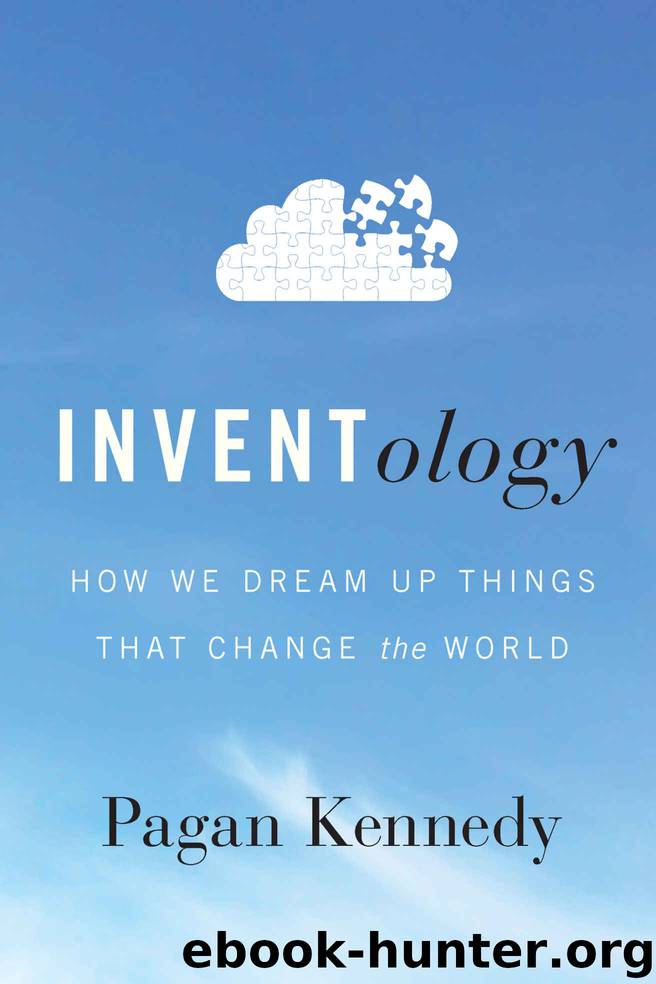Inventology: How We Dream Up Things That Change the World by Pagan Kennedy

Author:Pagan Kennedy
Language: eng
Format: mobi, epub, azw3
Publisher: Houghton Mifflin Harcourt
Published: 2016-01-25T14:00:00+00:00
11
How to Time-Travel
FOR MORE THAN A CENTURY, SCIENCE FICTION AND INVENTION have been caught in a kind of quantum entanglement; certain technologies have emerged from a lab and simultaneously from the pages of pulp novels. “Extravagant Fiction Today—Cold Fact Tomorrow”—that was the motto of the early-twentieth-century magazine Amazing Stories that helped readers to peer over the horizon at wonders like the television. Hugo Gernsback—the magnate who published a stable of sci-fi magazines—argued for a new storytelling genre that he called “scientifiction,” halfway between engineering and fiction. Side by side with his magazines about time-travel machines and starships, he released journals for inventors and put Nikola Tesla on the cover of one of his publications.
Indeed, hundreds—perhaps even thousands—of technologies have begun as stories or movie props and then tiptoed into reality. In the original Star Trek TV series, the medical tricorder looked suspiciously like it was made out of a cassette player and a salt shaker, but it functioned in a mind-bending way that infected our fantasies: it could peer through the skin and deep into the body, scanning and sensing to come up with an accurate diagnosis. Star Trek’s creator, Gene Roddenberry, in an effort to inspire real-world engineers, reportedly inserted a clause in his contract with Desilu/Paramount that would let anyone who created a hand-held, computerized diagnostic tool call it a “tricorder.” He intended his Star Trek gizmo to act as a kind of prototype, and indeed it did. A number of companies are now racing to create real-life versions of the machine.
We’re used to the idea that a science-fiction story can predict or help create a demand for a new technology. But less discussed is this: inventors often do the same kind of imaginary work. Brian David Johnson, the futurist at Intel Corporation, advocates for experimenting with written narratives, films, and cartoons to envision new possibilities—a technique he calls “science-fiction prototyping.” We can “use these fictions to get our minds around what that thing might one day be,” he wrote.
As we saw in the previous chapters, Silicon Valley embraced the idea that the engineers in polyester shirts and pocket protectors could double as dreamy soothsayers. As computer chips, and Moore’s Law, spread into many other industries, so too did science-fiction thinking.
Download
Inventology: How We Dream Up Things That Change the World by Pagan Kennedy.epub
Inventology: How We Dream Up Things That Change the World by Pagan Kennedy.azw3
This site does not store any files on its server. We only index and link to content provided by other sites. Please contact the content providers to delete copyright contents if any and email us, we'll remove relevant links or contents immediately.
Learning SQL by Alan Beaulieu(6158)
Weapons of Math Destruction by Cathy O'Neil(6084)
Digital Minimalism by Cal Newport;(5586)
iGen by Jean M. Twenge(5325)
Sapiens by Yuval Noah Harari(5263)
The Age of Surveillance Capitalism by Shoshana Zuboff(4117)
Elon Musk by Ashlee Vance(3986)
Thing Explainer by Randall Munroe(3849)
Apollo 8 by Jeffrey Kluger(3599)
Future Crimes by Marc Goodman(3459)
The Science Book (Big Ideas Simply Explained) by DK(3177)
Who Can You Trust? by Rachel Botsman(3059)
I Live in the Future & Here's How It Works by Nick Bilton(2900)
Infinite Energy Technologies by Finley Eversole(2897)
Steve Jobs by Walter Isaacson(2800)
Dawn of the New Everything by Jaron Lanier(2711)
The Innovators: How a Group of Hackers, Geniuses, and Geeks Created the Digital Revolution by Walter Isaacson(2699)
Chernobyl by Serhii Plokhy(2469)
Ben Franklin's Almanac by Candace Fleming(2424)
